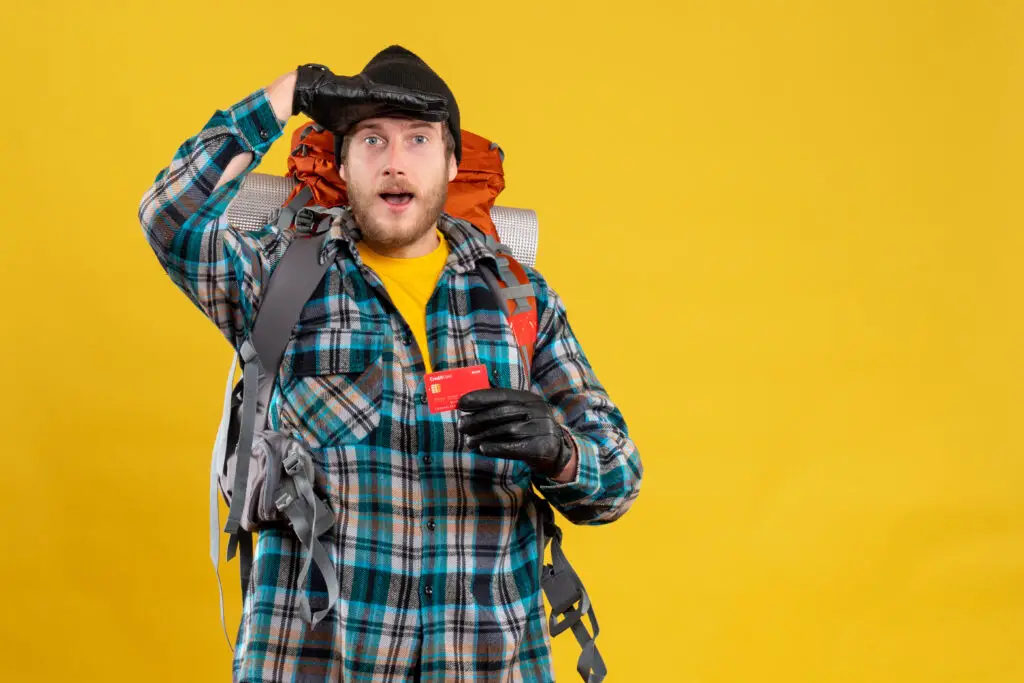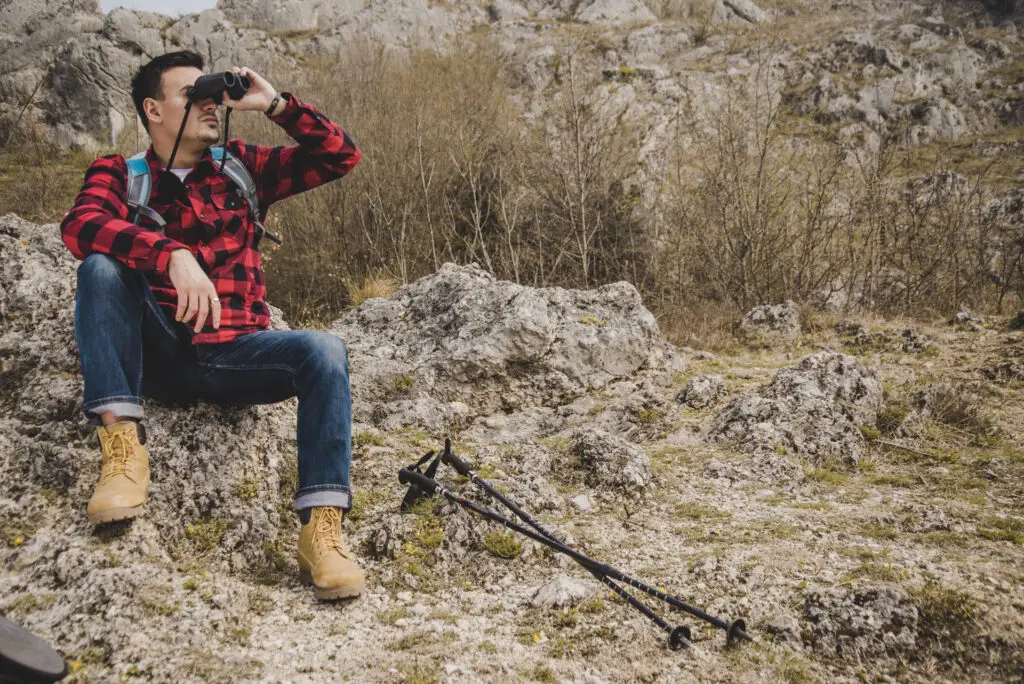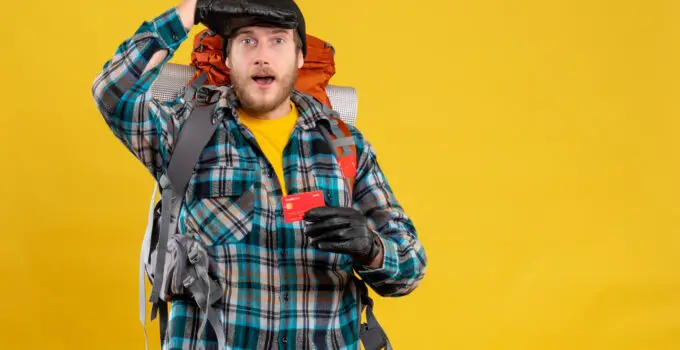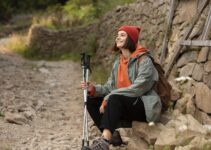How do you capture stunning moments while backpacking?
Taking pictures on a backpacking trip is not just about documenting your journey; it’s about preserving the beauty of nature and the experiences you encounter along the way.
Whether you’re navigating rugged trails or setting up camp in breathtaking landscapes, photography allows you to share your adventures with others.
With the right techniques and equipment, you can create memorable images that reflect the spirit of your travels.
This guide will provide essential tips for capturing stunning photographs while balancing the demands of backpacking.
Here how to use camera bag dividers?
Is it important to take pictures while backpacking?
Taking pictures while backpacking can be important for several reasons.
Firstly, photography helps capture the breathtaking landscapes and unique moments that you experience on your journey, allowing you to preserve memories long after the trip is over. Sharing these images can also inspire others to explore the outdoors and appreciate nature’s beauty.
Additionally, photos can serve as a personal record of your adventures, helping you reflect on your growth and experiences over time.
They can also document the challenges you faced and the milestones you achieved, providing motivation for future trips.
However, it’s essential to strike a balance; being overly focused on photography might detract from fully immersing yourself in the experience.
Here, how to clean manfrotto camera bag?
Ultimately, while capturing moments is valuable, the primary goal of backpacking should be to enjoy and connect with nature.
How do you take pictures while backpacking?
Taking pictures while backpacking involves a few key steps to ensure you capture great moments without compromising your experience.

First, choose a lightweight camera or smartphone that fits easily into your pack. Prioritize versatility—many modern smartphones offer excellent photo quality and various modes.
Plan your shots by scouting interesting compositions and lighting conditions, ideally during golden hours (early morning or late afternoon) for the best natural light.
Use your backpacking stops wisely: take photos during breaks or at scenic viewpoints to avoid interrupting your hike.
To keep your gear protected, use padded cases or dry bags. Familiarize yourself with your camera settings beforehand, so you can quickly adjust when a photo opportunity arises.
Lastly, don’t forget to enjoy the moment—take mental snapshots as well, and aim for a balance between photography and experiencing the great outdoors.
9 tips to take pictures while backpacking
Here are nine tips for taking pictures while backpacking:
1. Choose the Right Gear
Selecting the right camera gear is crucial for backpacking photography. Opt for lightweight and compact equipment, such as a mirrorless camera or a high-quality smartphone, to minimize the weight on your back.
Consider carrying a versatile zoom lens that can handle various shooting scenarios without the need to switch lenses frequently.
A sturdy yet lightweight tripod can be beneficial for long-exposure shots or low-light conditions. Ensure your gear is weather-resistant or bring protective cases to shield against rain or dust.
Pack extra batteries and memory cards, as running out of power or storage can be a significant setback in remote locations. Familiarize yourself with your gear before the trip to ensure you can quickly adapt to changing conditions.
By choosing the right equipment, you’ll be better prepared to capture stunning images without overburdening yourself on the trail.
2. Plan Your Shots
Planning your shots is essential for effective backpacking photography.
Before your trip, research your destination to identify scenic viewpoints, unique features, and the best times for optimal lighting. Create a shot list to ensure you don’t miss key moments or landscapes that inspire you.
Use apps like Photopills or The Photographer’s Ephemeris to track sunrise and sunset times, and check weather conditions for cloud cover or dramatic skies. Once on the trail, take time to scout locations and compose your shots thoughtfully.
Look for interesting foregrounds, leading lines, and dynamic compositions that will enhance your images. Consider how the terrain and lighting will change throughout the day, allowing you to adjust your plans accordingly.
This proactive approach will help you capture the essence of your adventure and ensure you return home with memorable photographs.
Here, how to clean a tenba polyethelene camera bag?
3. Embrace Natural Light
Natural light is one of the most critical elements in photography, especially when backpacking.
The best times to shoot are during the golden hour, shortly after sunrise and before sunset, when the light is soft and warm.
This type of lighting adds depth and dimension to your photos, making landscapes and subjects more visually appealing. During the day, be mindful of harsh midday sunlight, which can create unflattering shadows and blown-out highlights.
If you find yourself out during these times, look for shaded areas or use the surrounding environment to create interesting compositions. Experiment with backlighting and silhouettes, which can produce stunning results.
Additionally, understand how weather conditions, such as overcast skies or dramatic clouds, can influence the quality of light. By embracing natural light and adapting to its changes, you can elevate your backpacking photography to new heights.
4. Capture the Details
While sweeping landscapes are stunning, capturing details is equally important in backpacking photography.
Focus on the small elements that tell the story of your adventure—like unique rock formations, colorful wildflowers, or the intricate textures of tree bark.
These close-up shots add depth to your photo collection and provide context to the larger scenes. To capture details effectively, use a macro lens or the macro mode on your smartphone to highlight textures and colors.
Pay attention to composition and framing to create visually engaging images. Look for patterns, contrasts, and interesting angles that draw the viewer’s eye.
Don’t forget to incorporate elements of your journey, such as gear, maps, or food, into your shots to add a personal touch. By documenting these details, you create a more comprehensive visual narrative of your backpacking experience.
5. Be Mindful of Composition
Composition plays a vital role in photography, and being mindful of it can significantly enhance your backpacking images.
Utilize the rule of thirds by dividing your frame into a 3×3 grid and placing points of interest along the lines or at their intersections. This technique creates a more balanced and engaging photo.
Experiment with leading lines, which guide the viewer’s eye through the image, often found in paths, rivers, or tree lines. Additionally, consider the foreground, midground, and background to add depth to your photos. Incorporating interesting foreground elements can lead to a more immersive scene.
Don’t be afraid to break traditional rules and experiment with different angles or perspectives. Sometimes, shooting from a low angle or including an unexpected subject can create a more dynamic composition.
By practicing good composition techniques, you can elevate your backpacking photography to tell a compelling visual story.
6. Capture the Journey
Backpacking is not just about the destinations; it’s also about the journey itself. Make sure to document the experience by capturing candid moments, interactions with fellow hikers, and the challenges you face along the way.
These images provide context to your adventure and evoke emotions that landscapes alone might not convey.
Use your camera or smartphone to take spontaneous shots during breaks, at campsites, or while navigating difficult terrain. Try to capture the spirit of the adventure through expressions, laughter, and moments of reflection.
Additionally, consider using a self-timer or remote shutter to include yourself in the frame, creating a personal connection to the story you’re telling.
Here, how do you support a heavy camera lens?
By focusing on the journey and the people you meet, your backpacking photography will have a richer narrative and a deeper connection to the experiences that shaped your trip.
7. Stay Organized
Staying organized is essential for successful backpacking photography. A well-organized camera bag will help you access your gear quickly, ensuring you don’t miss any important shots.
Use padded dividers or insert pockets to separate your camera, lenses, and accessories. Keep frequently used items, like extra batteries and memory cards, in easily accessible pockets.
Consider labeling your gear or using color-coded cases to make identification easier on the go. It’s also wise to regularly check and maintain your equipment to avoid issues on the trail.
Create a checklist of your gear before leaving, ensuring nothing is forgotten. Additionally, keep your memory cards organized, labeling them based on usage or storage capacity.
By maintaining an organized system, you’ll spend less time fumbling for gear and more time capturing the beauty around you, leading to a more enjoyable and productive photography experience.
8. Edit and Curate Your Photos
After your backpacking adventure, editing and curating your photos is essential to showcase your best work.
Start by reviewing all your images and selecting the ones that resonate most with your experience. Look for moments that tell a story or evoke emotion, as these will be the foundation of your curated collection.
Use editing software or apps like Lightroom or Snapseed to enhance your images, adjusting exposure, contrast, and color balance to bring out their full potential. Don’t overdo it—aim for a natural look that maintains the essence of the moment.
Once your edits are complete, consider creating a photo album or slideshow to share with friends and family, or even on social media.
Curating your photos not only highlights your best work but also allows you to reflect on your journey and share your adventure with others in a meaningful way.
9. Enjoy the Process
Finally, one of the most important tips for taking pictures while backpacking is to enjoy the process. Photography should enhance your experience, not detract from it.
While capturing stunning images is rewarding, remember to immerse yourself in the beauty of nature and the thrill of exploration. Take breaks to soak in the surroundings, appreciate the quiet moments, and connect with fellow hikers. Allow yourself to be spontaneous; some of the best shots happen when you least expect them.
Don’t stress about getting the perfect shot every time; instead, focus on enjoying your adventure. Balancing photography with the joy of hiking will lead to more authentic images that reflect the essence of your experience.
Ultimately, the memories you create during your journey are just as valuable as the photos you take, so embrace the moments and let your passion for photography flow naturally.
7 steps to take take picture while backpaking?
Here are seven essential steps to take great pictures while backpacking:
1. Prepare Your Gear
Preparing your gear is the first step to successful backpacking photography. Start by selecting a lightweight camera or smartphone that suits your needs.
A mirrorless camera or high-quality smartphone can deliver excellent results without adding much weight. Pack a versatile lens, such as a zoom lens, that allows for a variety of shots without needing to change lenses frequently.
Don’t forget essential accessories like extra batteries, memory cards, and a lightweight tripod, which can be invaluable for capturing long-exposure shots or stabilizing your camera during low-light conditions.

Additionally, consider the weather conditions you might encounter. If rain or moisture is a possibility, use weatherproof bags or cases to protect your gear.
Familiarize yourself with your equipment before your trip to ensure you’re comfortable with its settings and functionalities.
Preparing your gear not only makes it easier to capture beautiful images but also enhances your overall experience, allowing you to focus on the adventure rather than worrying about your equipment.
2. Research Your Location
Researching your location is a crucial step in backpacking photography that can significantly enhance your results. Before your trip, gather information about the area you’ll be exploring.
Look for popular viewpoints, hidden gems, and any unique geological or ecological features that might be worth photographing. Websites, guidebooks, and social media platforms can provide valuable insights into must-see spots and local tips.
Here, For shoulder pain what kind of camera bag you should try?
Consider the time of year and season as they can drastically change the scenery and lighting conditions. For example, fall foliage can offer vibrant colors, while spring may showcase blooming wildflowers.
Also, take note of the best times to photograph your location, like sunrise or sunset, which offer soft, golden light. Apps like The Photographer’s Ephemeris can help you understand sun and moon positions.
By thoroughly researching your location, you can maximize your photography opportunities and ensure you capture the essence of your backpacking adventure.
3. Plan for the Right Light
Planning for the right light is essential for achieving stunning photographs while backpacking.
Natural light can dramatically affect the mood and quality of your images, so understanding when and how to utilize it is key.
The golden hours—shortly after sunrise and before sunset—provide the most flattering light, casting a warm glow over landscapes and reducing harsh shadows.
Aim to be at key locations during these times to make the most of the natural beauty around you.
Midday light can be harsh and unflattering, creating stark contrasts and deep shadows. If you find yourself out during this time, seek shaded areas or use natural elements to create interesting compositions.
Overcast days can also offer diffused light, which is excellent for capturing colors and textures without glare.
Moreover, experiment with backlighting, where the light source is behind your subject, creating silhouettes or glowing edges.
By planning your photography around the quality of light, you’ll create more visually compelling and dynamic images that truly represent your backpacking experience.
4. Compose Thoughtfully
Thoughtful composition is a fundamental aspect of capturing striking images while backpacking. Good composition helps guide the viewer’s eye and creates a sense of balance within the photograph.
Begin by applying the rule of thirds: imagine your frame divided into a 3×3 grid, placing points of interest along the lines or at their intersections. This technique can create more engaging and dynamic images.
Incorporate leading lines—natural pathways, rivers, or trails that guide the viewer’s gaze through the image. Additionally, consider the foreground, midground, and background elements to add depth to your shots.
Including interesting foreground subjects can enhance the overall composition and draw viewers into the scene.
Don’t shy away from breaking traditional rules; sometimes shooting from unconventional angles or perspectives can yield more compelling results.
Experiment with different viewpoints, such as low angles or elevated shots, to add variety to your photography. By composing thoughtfully, you’ll create images that resonate more deeply with viewers and effectively convey the beauty of your backpacking journey.
5. Capture the Experience
Capturing the experience of backpacking is essential for telling a complete story through your photography.
While stunning landscapes are important, documenting the moments and emotions that unfold during your journey can create a richer narrative.
Take candid shots of fellow hikers, spontaneous laughter, or moments of reflection at a scenic overlook. These images not only convey the spirit of your adventure but also provide context to the stunning landscapes surrounding you.
Utilize candid photography to showcase authentic moments; these spontaneous shots often evoke stronger emotions than posed images.
Don’t forget to include yourself in the journey by using a self-timer or remote shutter, allowing you to create a personal connection with the narrative.
Here, 10 best vera bradely camera bag?
Consider capturing the challenges and triumphs you face along the way, whether it’s tackling a steep ascent or relaxing around a campfire.
By focusing on the experience and the people who share it with you, your backpacking photography will resonate more deeply and reflect the true essence of your adventure.
6. Stay Flexible and Spontaneous
Staying flexible and spontaneous while backpacking can lead to unexpected and delightful photographic opportunities.
While planning is essential, the nature of outdoor adventures often means encountering unpredictable conditions, such as changing weather or unexpected wildlife sightings.
Embrace these moments as potential photography goldmines; sometimes the best shots come when you least expect them.
Keep your camera or smartphone easily accessible so you can quickly capture fleeting moments, whether it’s a sudden burst of sunlight breaking through the clouds or an intriguing animal encounter.
Allow yourself to stray from your planned itinerary when something catches your eye, and don’t hesitate to explore new angles or perspectives of familiar scenes. Be open to experimentation; shooting in different styles or using creative techniques can yield stunning results.
By maintaining a flexible mindset, you’ll capture the unexpected beauty that makes your backpacking experience truly memorable.
7. Edit and Share Your Photos
Editing and sharing your photos is the final step in creating a cohesive and impactful visual story from your backpacking adventure.
After your trip, take the time to review all your images and select the ones that resonate with you. Look for moments that evoke emotion, showcase the beauty of nature, or reflect the spirit of your journey.
Organizing your photos will help you curate a meaningful collection that tells the story of your adventure.
Use editing software or apps like Lightroom or Snapseed to enhance your images.
Adjust exposure, contrast, and color balance to bring out the best in your photos, but aim for a natural look that maintains the essence of the moment. Once you’ve edited your images, consider sharing them with friends, family, or on social media.
Crafting a narrative around your photos can enhance the viewing experience—add captions or anecdotes that provide context and enrich the story behind each image.
By taking the time to edit and share thoughtfully, you’ll not only showcase your skills but also inspire others to explore the great outdoors.
5 methods to take pictures while backpacking
Here are five effective methods for taking pictures while backpacking:
1. Use Natural Light to Your Advantage
Utilizing natural light is one of the most important methods for capturing stunning photographs while backpacking. The quality of light can drastically affect the mood and clarity of your images.
The golden hours—shortly after sunrise and before sunset—offer the softest, most flattering light, resulting in warm tones and reduced harsh shadows. Aim to arrive at key locations during these times to maximize your chances of capturing breathtaking scenes.
During midday, when the sun is high, the light can be harsh and unflattering. To mitigate this, seek shaded areas or use natural elements to create interesting compositions.
For instance, shooting under trees can diffuse the light, reducing glare and harsh contrasts. Overcast days also provide excellent opportunities, as the diffused light enhances colors and textures without creating strong shadows.
Experimenting with backlighting—where the light source is behind your subject—can yield dramatic silhouettes or glowing edges. This technique can add depth and intrigue to your photographs.
By being mindful of the natural light conditions and adapting your shooting techniques accordingly, you can significantly elevate the quality of your backpacking photography.
2. Leverage Composition Techniques
Effective composition is essential for creating visually appealing photographs while backpacking.
Using well-established techniques can enhance the impact of your images. One of the fundamental methods is the rule of thirds, which involves dividing your frame into a 3×3 grid.
Placing points of interest along the lines or at their intersections creates a balanced and engaging composition, drawing the viewer’s eye.
Another technique is incorporating leading lines, which guide the viewer through the photograph.
Natural elements such as trails, rivers, or rock formations can serve as leading lines, adding depth and dimension to your images.
Additionally, pay attention to the foreground, midground, and background elements. Including an interesting foreground can create a more immersive experience for the viewer.
Experiment with angles and perspectives to add variety to your shots. Sometimes, shooting from a low angle can highlight foreground details and make the scene more dramatic.
By leveraging these composition techniques, you’ll create images that resonate more deeply with viewers and effectively showcase the beauty of your backpacking journey.
3. Capture Candid Moments
Capturing candid moments is a powerful method for documenting the essence of your backpacking experience. While scenic landscapes are essential, the true spirit of an adventure often lies in the interactions and emotions shared along the way. Candid photography allows you to tell a more authentic story, showcasing the relationships, challenges, and joy that come with exploring the outdoors.
To capture candid moments, keep your camera easily accessible, so you can quickly snap photos of spontaneous interactions or events. Whether it’s a friend laughing during a break, a group huddled together for warmth, or a fellow hiker helping someone with their gear, these unposed shots often convey more genuine emotion than staged photographs.
Consider using burst mode or continuous shooting to increase your chances of capturing the perfect candid moment, especially in dynamic situations. Be patient and observant; often, the most compelling images happen when you least expect them. By focusing on candid moments, your backpacking photography will reflect the rich tapestry of experiences that define your adventure, creating a more meaningful narrative.
4. Experiment with Different Perspectives
Experimenting with different perspectives is an essential method for creating unique and engaging photographs while backpacking.
Often, the most compelling images come from trying unconventional angles or viewpoints. Instead of always shooting from eye level, explore a variety of positions, such as crouching low to the ground or finding an elevated spot to capture the scene from above. This approach can provide fresh compositions that stand out from typical landscape shots.
Additionally, consider including foreground elements that frame your subject or lead the viewer’s eye into the image. Rocks, flowers, or branches can add depth and interest, making your photographs more immersive.
Don’t hesitate to move around your subject; sometimes walking just a few steps can lead to drastically different compositions.
Incorporating the surrounding environment can also enhance your images.
Capture the vastness of a landscape by including a hiker in the foreground, emphasizing scale and adding a human element to your photos.
By experimenting with perspectives and being willing to break from traditional norms, you can create captivating images that capture the spirit of your backpacking adventure in a new light.
5. Edit Thoughtfully
Thoughtful editing is a crucial method for enhancing your backpacking photographs and ensuring they effectively convey the beauty of your adventure.
After your trip, take the time to review and curate your images, selecting those that resonate most with you and tell a cohesive story. This step is essential for presenting your best work and creating a strong visual narrative.
Utilize editing software or apps, such as Adobe Lightroom or Snapseed, to enhance your photos.
Focus on adjusting exposure, contrast, and color balance to bring out the best in your images while maintaining a natural look. Cropping can also improve composition by removing distractions and tightening the frame around your subject.
While editing, avoid over-processing your images. Aim for enhancements that elevate the photo without making it appear artificial.
Consider creating a consistent editing style that reflects your personal aesthetic and ties your collection together.
Once your edits are complete, share your work thoughtfully—whether through social media, a personal blog, or a photo album—providing context and stories behind your images.
By editing thoughtfully, you not only showcase your photography skills but also create a lasting representation of your backpacking experience.
5 Benefits to take picture while backpacking
Here are five benefits of taking pictures while backpacking:
1. Preservation of Memories
One of the most significant benefits of taking pictures while backpacking is the preservation of memories.
Photographs serve as tangible reminders of your experiences, allowing you to revisit moments long after the trip is over.
Whether it’s a stunning landscape, a challenging ascent, or a joyful moment shared with friends, photos capture the essence of your adventure.
When you look back at these images, you’re transported to those places, evoking the feelings and emotions you experienced during your journey.
They can spark nostalgia and serve as a powerful way to reflect on your personal growth and the challenges you overcame. This act of reminiscence can be particularly meaningful as it connects you to nature and your past adventures.
Moreover, sharing these photos with friends and family can ignite conversations and inspire others to explore the great outdoors.
Social media platforms provide an excellent avenue for showcasing your experiences, allowing you to share your journey with a broader audience.
Ultimately, taking pictures while backpacking ensures that your cherished memories are preserved and can be revisited for years to come.
2. Enhancing Your Photography Skills
Taking pictures while backpacking provides an excellent opportunity to enhance your photography skills.
Each trip presents unique challenges and environments, encouraging you to experiment with various techniques, settings, and compositions.
Whether you’re capturing landscapes, wildlife, or candid moments, you’ll develop a deeper understanding of your camera’s capabilities and learn to adapt to different lighting conditions.
Engaging with your surroundings and striving to capture the perfect shot can sharpen your eye for detail and improve your compositional skills.
You’ll learn about the importance of framing, the rule of thirds, and how to use natural light to your advantage. The more you practice, the more instinctual these skills become, leading to improved photographic outcomes over time.
Additionally, each backpacking trip can present opportunities for creativity. Whether it’s experimenting with long exposures of flowing water or capturing the vibrant colors of sunrise, you’ll develop your artistic voice.
By continuously challenging yourself to capture the beauty of nature, you’ll return home not only with stunning images but also with newfound confidence and proficiency in your photography.
3. Sharing and Inspiring Others
Taking pictures while backpacking allows you to share your experiences and inspire others to explore the outdoors.
In today’s digital age, sharing your photography through social media, blogs, or online galleries can reach a wide audience, encouraging friends, family, and even strangers to embark on their own adventures.
Your images can serve as powerful visual storytelling tools, conveying the beauty and joy of nature.
When you share your photographs, you highlight the importance of preserving natural landscapes and the rewards of outdoor exploration.
Stunning visuals can motivate others to step outside their comfort zones and engage with nature, fostering a sense of adventure and curiosity.
By documenting your journey, you contribute to a growing community of outdoor enthusiasts and nature advocates.
Furthermore, your experiences and insights can provide valuable information to fellow hikers and travelers.
Sharing tips, recommendations, and personal stories alongside your images can help others plan their trips and feel more connected to the outdoor community.
Ultimately, your backpacking photography not only serves your personal narrative but also inspires and motivates others to create their own memorable adventures.
4. Creating a Visual Story
Taking pictures while backpacking enables you to create a compelling visual story that encapsulates your journey.
Each photograph acts as a chapter, contributing to an overarching narrative that reflects the places you visited, the people you encountered, and the challenges you faced.
This storytelling aspect adds depth to your experience, allowing you to share more than just images; you’re sharing an entire adventure.
When you curate your photographs, you can arrange them in a way that highlights the progression of your trip, creating a chronological timeline that captures the essence of your journey.
By including a mix of landscapes, candid moments, and detailed shots, you provide a holistic view that transports viewers to the heart of your adventure.
This visual storytelling can be particularly impactful when shared on platforms like blogs or social media, as it invites others to engage with your experiences.
Additionally, creating a visual story fosters reflection and personal growth.
By reviewing your images and the narrative they form, you can gain insights into your relationship with nature and the impact of your journey on your life.
Ultimately, taking pictures while backpacking allows you to weave a rich tapestry of experiences that resonate with both you and your audience.
5. Encouraging Mindfulness and Presence
Taking pictures while backpacking encourages mindfulness and presence in your surroundings.
The act of photographing forces you to slow down and engage with the environment, enhancing your appreciation for nature.
Instead of rushing through trails or simply checking off destinations, you become attuned to the details that often go unnoticed—the play of light on leaves, the intricate textures of rocks, or the patterns of clouds overhead.
This heightened awareness allows you to connect more deeply with your surroundings, fostering a sense of gratitude and wonder.
As you pause to frame a shot or adjust your camera settings, you create moments of reflection that enrich your experience.
This mindfulness can lead to a greater emotional connection to the landscapes you explore, transforming your backpacking trip from a mere physical endeavor into a meaningful journey.
Moreover, practicing mindfulness through photography can alleviate stress and promote mental well-being. Engaging with nature in this way provides a therapeutic outlet, helping you to feel more grounded and present.
By taking pictures while backpacking, you cultivate a deeper understanding of your environment and create lasting memories that resonate long after the journey ends.
How do you take pictures while backpacking for beginners?
Taking pictures while backpacking as a beginner involves a few simple steps. First, choose a lightweight camera or smartphone that you’re comfortable using. Familiarize yourself with its basic settings, such as exposure and focus.
Next, plan your shots by researching your destination and identifying key locations and times for optimal lighting, like during sunrise or sunset. Use natural light to your advantage; avoid harsh midday sun when possible.
Focus on composition by applying the rule of thirds—imagine your frame divided into a grid and place subjects along the lines.
Capture candid moments to tell a more personal story, including fellow hikers and unique experiences.
Finally, keep your camera accessible for spontaneous shots and remember to enjoy the process, balancing photography with fully experiencing the adventure. With practice, you’ll improve your skills and capture beautiful memories of your backpacking journey.
How do you take pictures while backpacking
To take pictures while backpacking, start by selecting a lightweight camera or smartphone that’s easy to carry. Familiarize yourself with its basic settings, focusing on exposure and focus.

Plan your shots by researching the area and identifying key locations to capture at optimal times, such as sunrise or sunset for the best light.
Utilize natural light and avoid harsh midday sun by seeking shaded spots or using cloudy days for softer lighting. Focus on composition using techniques like the rule of thirds, placing key elements along the grid lines.
Capture candid moments to document your journey authentically, including fellow hikers and interactions.
Keep your camera accessible for spontaneous shots, and remember to balance photography with enjoying the experience. With practice and a mindful approach, you’ll create lasting memories and stunning images of your backpacking adventures.
How to take pictures of yourself hiking?
To take pictures of yourself while hiking, start by choosing the right equipment, such as a smartphone with a good camera or a lightweight DSLR.
Use a tripod or a selfie stick to help stabilize your shots and avoid camera shake. Alternatively, find a sturdy surface like a rock or log to set your camera on for self-timer shots.
Plan your poses and compositions in advance. Consider using the surrounding landscape to frame your shot, such as standing on a trail with mountains in the background. Use natural light to your advantage; aim for early morning or late afternoon for the best results.
For candid shots, set your camera to burst mode to capture multiple frames as you move. Finally, embrace spontaneity—don’t be afraid to take a few fun or relaxed shots that capture the joy of your hiking experience.
Related faq’s
What type of camera should I bring backpacking?
Opt for a lightweight camera, such as a mirrorless or compact camera, or use a high-quality smartphone. This ensures ease of transport while still capturing great images.
How do I protect my camera gear while hiking?
Use weather-resistant cases or padded bags to shield your gear from moisture and impact. Consider packing silica gel packets to absorb humidity if you’re hiking in wet conditions.
When is the best time to take pictures while backpacking?
The golden hours—shortly after sunrise and before sunset—offer the best natural light. Aim to shoot during these times for softer, more flattering images.
How can I improve my composition in photos?
Apply the rule of thirds by imagining your frame divided into a grid and placing points of interest along the lines. Experiment with different angles and perspectives for more dynamic shots.
Should I include people in my backpacking photos?
Yes! Including fellow hikers or candid moments adds depth and context to your images, making them more relatable and personal.
How can I capture action shots while hiking?
Use burst mode to take multiple shots in quick succession, which increases your chances of capturing the perfect moment, especially during dynamic activities like climbing or jumping.
What should I do if my camera battery dies on the trail?
Always carry extra batteries and consider a portable charger for your smartphone. Plan to conserve battery by limiting playback and using energy-saving settings when possible.
Conclusion
Taking pictures while backpacking enhances your experience and allows you to capture the beauty of nature.
By choosing the right equipment, planning your shots, and utilizing natural light, you can create stunning images that tell the story of your journey. Focus on composition techniques, include candid moments, and keep your camera accessible for spontaneous shots.
Remember to balance photography with enjoying the adventure.
With practice and mindfulness, you’ll not only document your backpacking trips but also develop your photography skills, creating lasting memories that you can cherish long after the hike is over.










